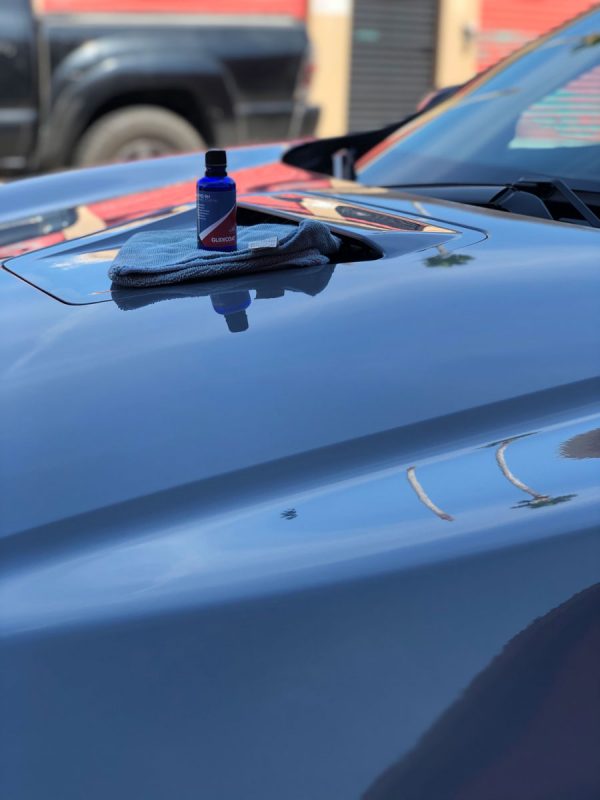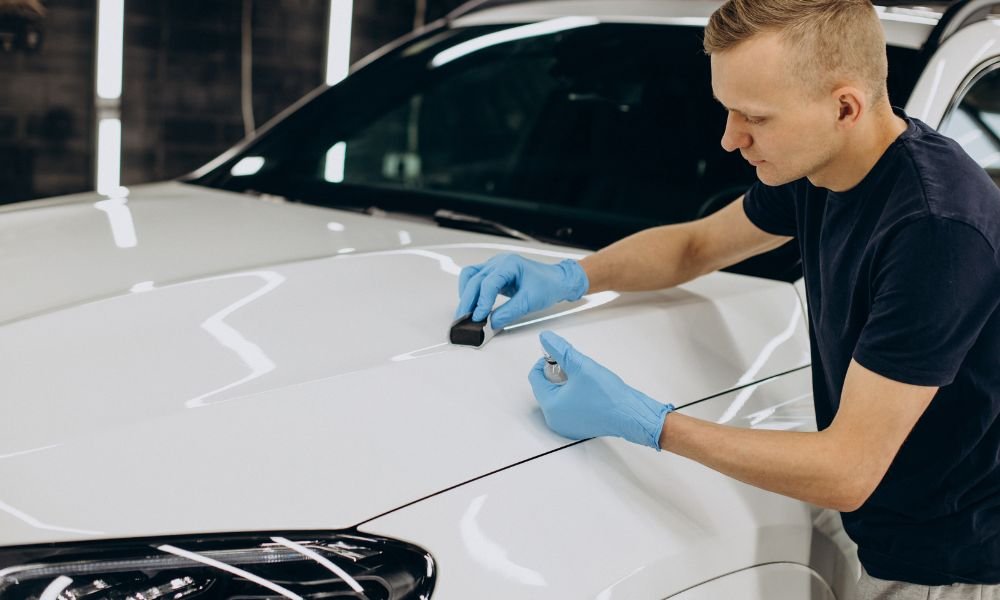Ceramic Coating vs. Conventional Wax: Which One Offers Superior Protection?
Ceramic Coating vs. Conventional Wax: Which One Offers Superior Protection?
Blog Article
Recognizing the Science Behind Ceramic Coating for Enhanced Automobile Resilience
The scientific research of ceramic layer is revolutionizing car maintenance by providing a formidable shield against extreme environmental factors. At its core, this technology utilizes the power of silicon dioxide and titanium dioxide to develop a sturdy, safety layer. What specifically makes these substances so effective in protecting a car's outside? As we explore the intricate composition and application procedure of ceramic coverings, we uncover the secrets behind their remarkable security and durability. Just how does this contrast to standard methods, and what ramifications does it have for car upkeep in the long-term? The solutions may surprise you.

Make-up of Ceramic Coatings
Ceramic finishes are mostly made up of silicon dioxide (SiO2), which is acquired from natural products like quartz and sand. This substance forms the backbone of the coating, supplying its characteristic solidity and resistance to environmental aspects. Along with SiO2, ceramic coverings usually integrate titanium dioxide (TiO2) for boosted UV protection and enhanced resistance to environmental contaminants. These nanocomposite products produce a robust, chemical bond with the car's surface area, offering an enduring safety layer.
The formula of ceramic finishes is a meticulous procedure where the concentration of SiO2 can dramatically influence the covering's efficiency. Higher SiO2 web content typically leads to greater toughness and hardness, contributing to the covering's capability to withstand scratches and chemical etching. However, the balance of parts is crucial; also much SiO2 can make the covering brittle, while inadequate can jeopardize its protective homes.
Manufacturers might likewise integrate added compounds, such as polysilazane, to improve versatility and simplicity of application. These ingredients improve the finishing's hydrophobic residential or commercial properties, making certain water and impurities bead off the surface area easily. This engineered structure underscores the efficacy of ceramic finishes in protecting a lorry's outside against a range of damaging problems.
Application Refine Clarified
Applying a ceramic covering to a lorry involves a number of essential actions, each vital to guaranteeing ideal attachment and performance of the protective layer - ceramic coating. The procedure starts with a comprehensive wash and decontamination of the vehicle's surface area to eliminate dirt, gunk, and previous waxes or sealers. This action is vital as any pollutants left externally can hinder the coating's capacity to bond effectively
Following the first cleansing, the following step entails brightening the automobile to get rid of any kind of imperfections, such as swirl marks or scratches. Sprucing up makes certain a smooth surface, which is crucial for the finish to adhere properly and provide an uniform surface. After polishing, a surface prep work spray is made use of to eliminate any kind of staying deposits and make sure that the surface is completely clean.

Safety Advantages
Often hailed for its outstanding protective top qualities, a ceramic coating offers many advantages that substantially boost lorry toughness. At its core, ceramic covering develops a hard, semi-permanent obstacle over a vehicle's outside, which acts as a shield against various environmental threats.
Additionally, ceramic finishes show hydrophobic residential properties, suggesting they drive away water and facilitate a self-cleaning result. This feature minimizes the adherence of dust and mud, simplifying maintenance and cleaning processes. The finishing's resistance to chemical etching better guarantees that the lorry's surface area continues to be unblemished despite exposure to extreme cleaner and contaminants.
Along with these protective advantages, the ceramic finishing boosts an automobile's aesthetic charm by creating a glossy surface that highlights color depth and quality. This not only sustains the automobile's aesthetic allure yet likewise contributes to its long-lasting worth by maintaining the integrity of its outside over time.
Contrasting to Typical Techniques
Unlike conventional techniques of car protection, such as shaving or sealers, ceramic finishes supply an even more more durable and durable service. Where waxes and sealants commonly give a momentary layer of security, typically calling for reapplication every couple of months, ceramic coverings develop a semi-permanent bond with the car's paint. This bond develops a safety layer that is resistant to ecological impurities, UV damage, and minor abrasions.
Traditional waxes are mainly made up of natural components like carnauba wax, providing a shiny surface however lacking the robust protective top qualities of ceramic finishings. Sealers, while artificial and offering slightly much better longevity than waxes, still drop short in comparison to the strength and chemical resistance of ceramic layers. The sophisticated modern technology of ceramic finishes includes nanotechnology, which permits them to complete microscopic flaws in the paint surface area, leading to a smoother and much more hydrophobic surface.
In regards to application, ceramic coverings call for an even more careful process, commonly demanding expert installation to make certain optimum performance. This contrasts with the reasonably uncomplicated application of waxes and sealants, which can be applied in the house. The superior security and visual improvement offered by ceramic layers justify the investment for those looking for lasting vehicle conservation.
Long Life and Upkeep
Just how does the longevity of ceramic coverings convert into ease of upkeep for lorry owners? The sophisticated formula of ceramic finishings gives a robust safety layer on the automobile's surface, which considerably expands the life-span of the automobile's exterior surface.
Furthermore, the hydrophobic nature of ceramic layers allows water and other fluids to grain up and roll off the surface, lugging dust and debris with them. While the finishing itself is resilient, it is not totally maintenance-free. Thus, ceramic coverings offer a beneficial balance in between long-lasting sturdiness and simplified maintenance for automobile care.
Final Thought
Ceramic coatings, with their sophisticated chemical structure of silicon dioxide and titanium dioxide, offer a powerful barrier against ecological damage, considerably enhancing vehicle sturdiness. The hydrophobic residential or commercial properties advertise self-cleaning, minimizing upkeep efforts and protecting visual charm. When contrasted to standard techniques, ceramic layers provide superior defense versus UV rays, oxidation, and chemical etching. This innovation extends the life expectancy of automobile exteriors, making it a cutting-edge service for lasting conservation and minimal upkeep.
The solution of ceramic finishes is a meticulous process where the focus of SiO2 can dramatically affect the coating's performance.Using a ceramic layer to an automobile includes numerous crucial actions, each essential to ensuring optimum bond and efficiency of the protective layer.Often hailed for its remarkable protective top qualities, a ceramic layer uses various benefits that considerably improve vehicle longevity. The innovative solution of ceramic finishes provides a robust protective layer on the lorry's surface area, which considerably prolongs the lifespan of the auto's exterior coating.Ceramic coatings, with their advanced chemical website here structure of silicon dioxide and titanium dioxide, offer a formidable obstacle against environmental damage, considerably improving lorry durability.
Report this page